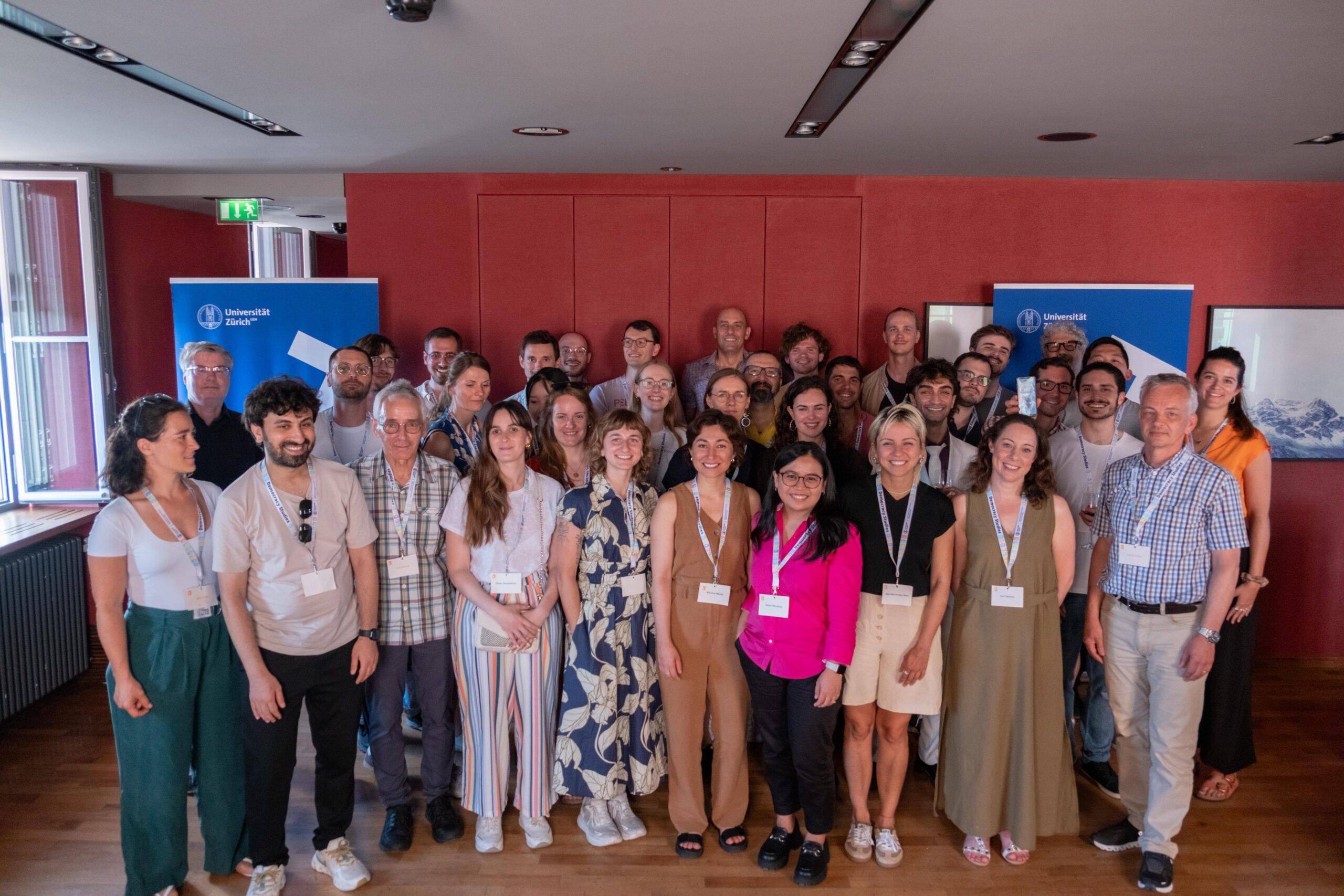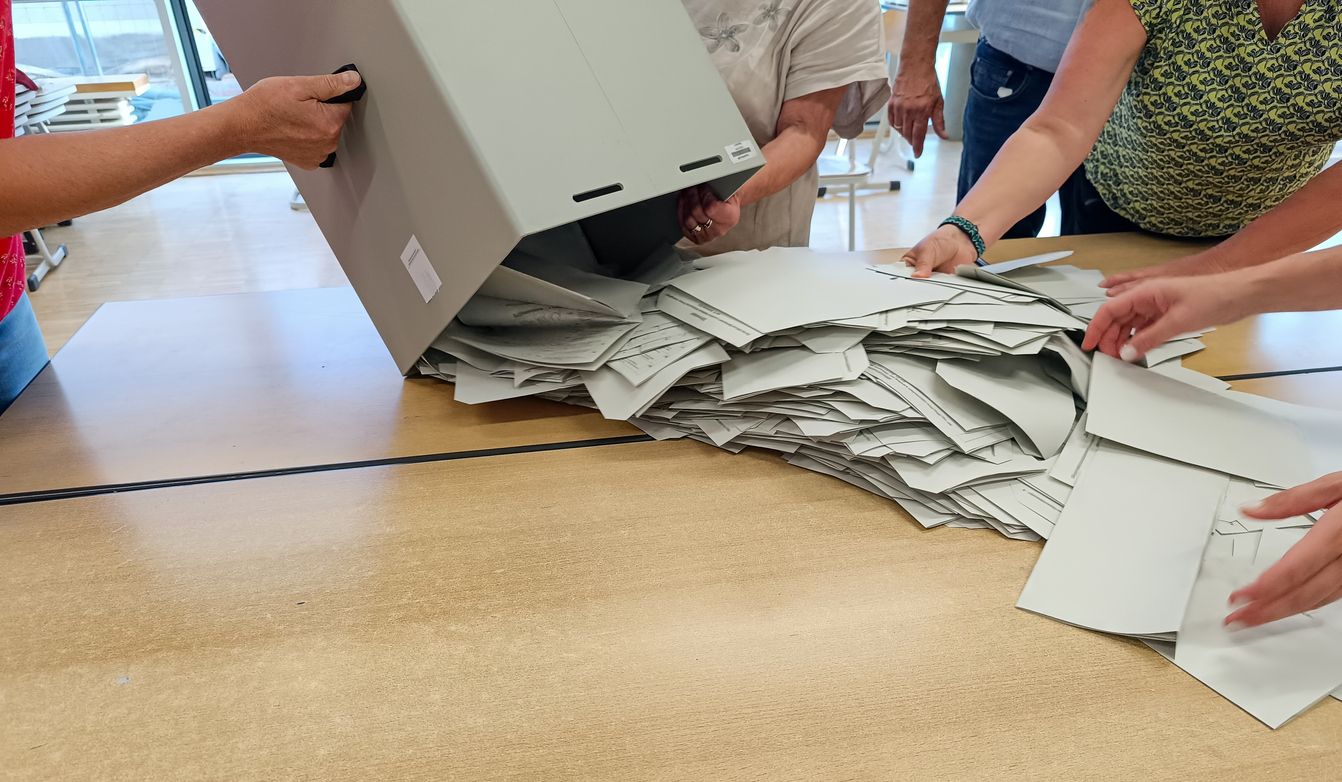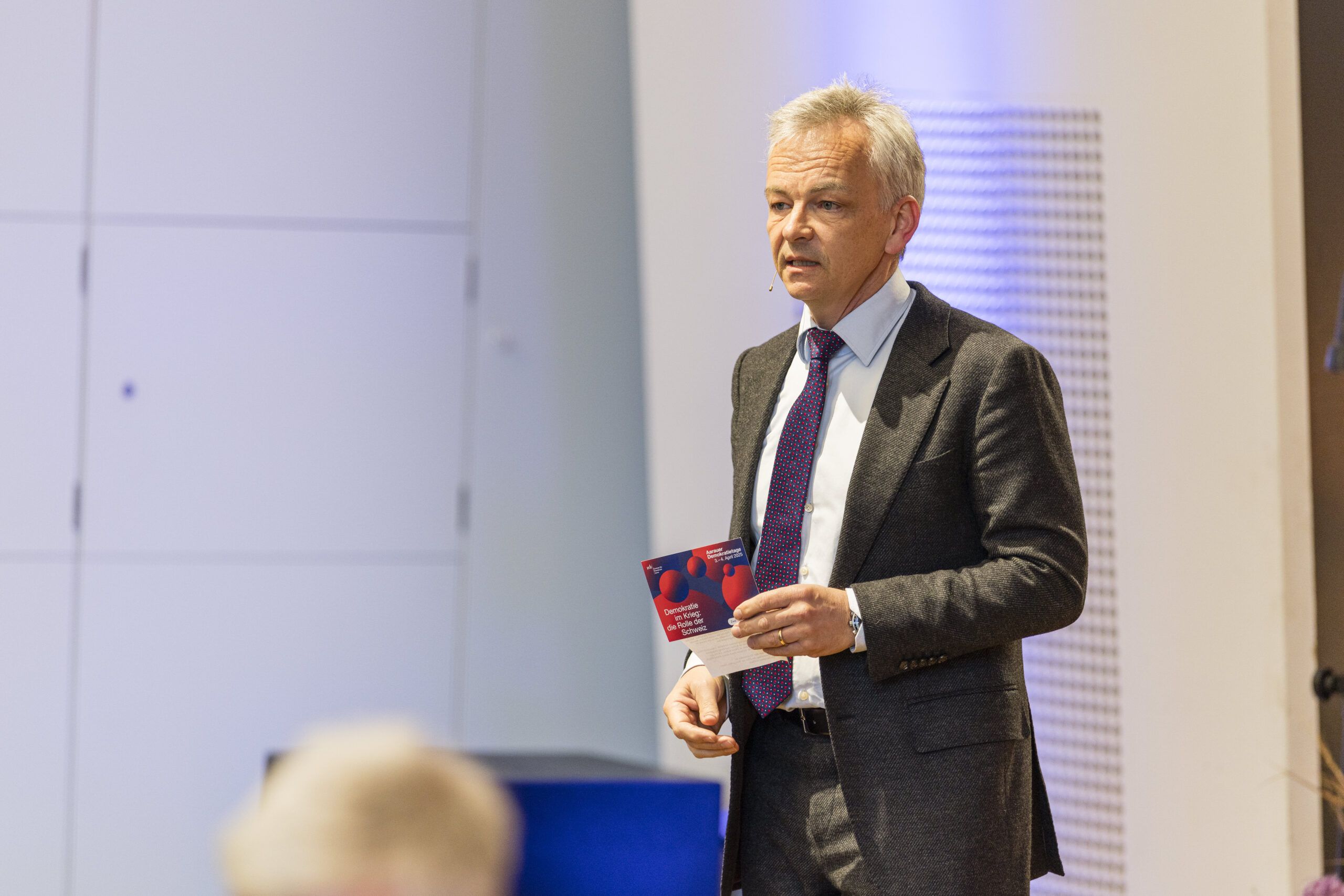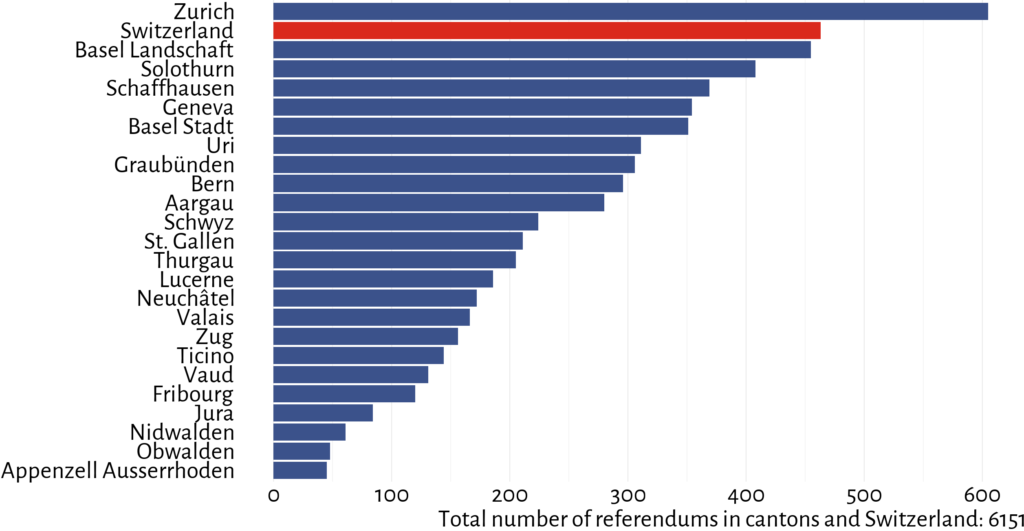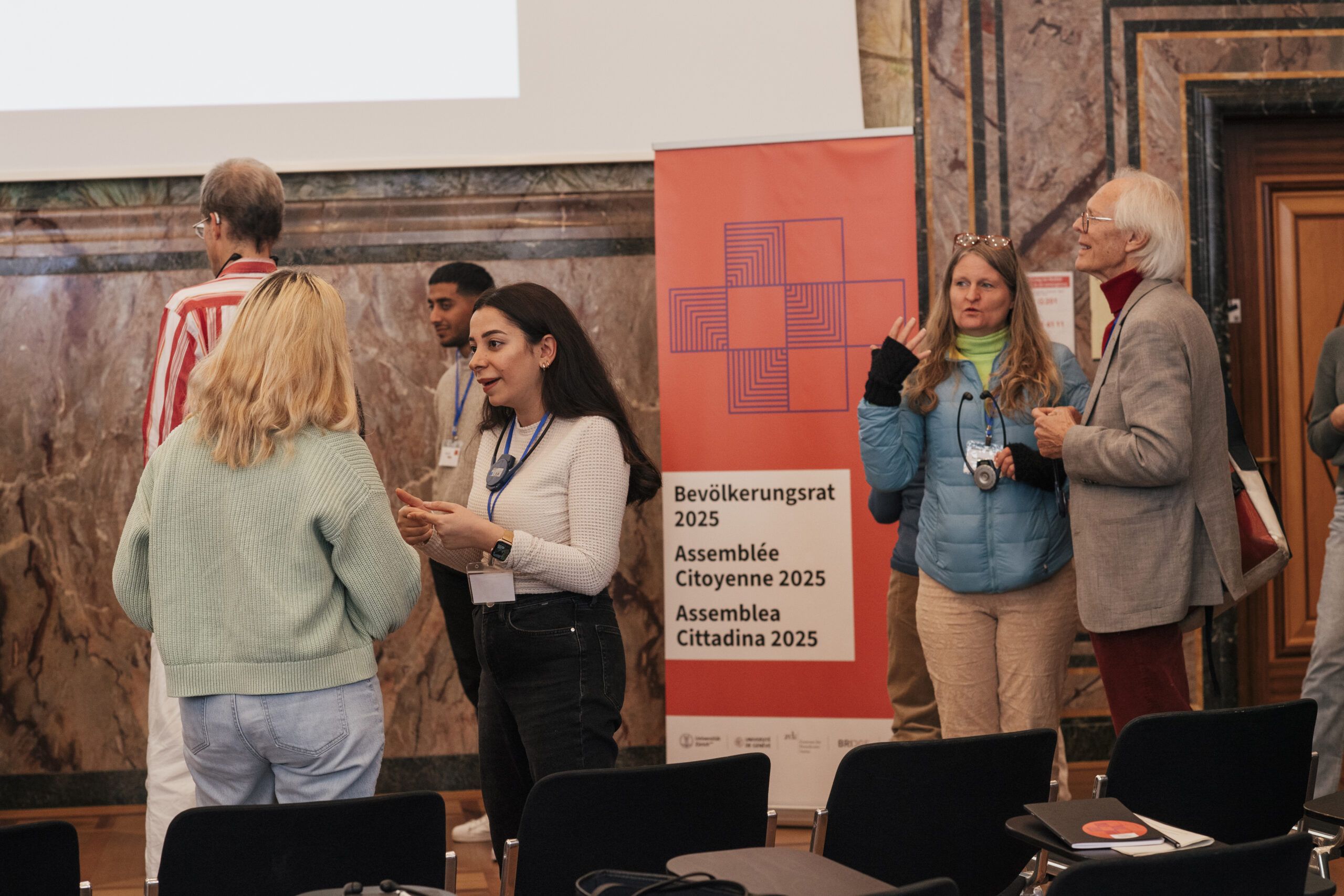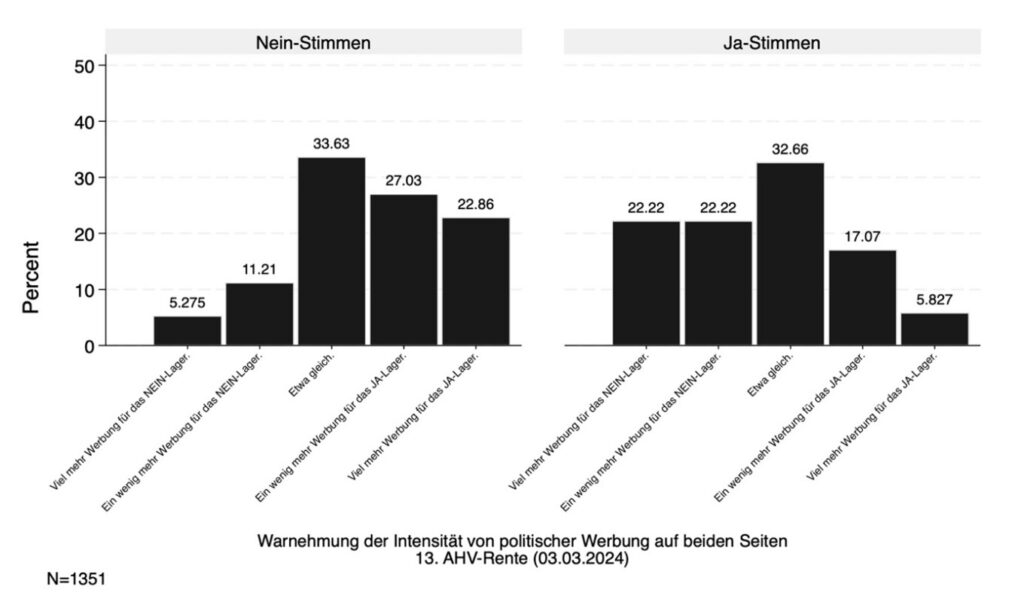On May 18, 2025, the voters of Aargau approved a revision of the tax law, while the popular initiative «Equal pay in the canton of Aargau – now!» was rejected. It was significant that the middle classes in general and FDP sympathizers in particular took part in the votes. In addition to the left-right divide, trust in the government also played a major role in the tax law. In the case of the equal pay initiative, however, there were clear differences between the genders and age groups. This is shown by the survey on the cantonal referendum on May 18, 2025, which was conducted at the Center for Democracy Studies Aarau.
In the cantonal referendum on May 18, 2025, voters in Aargau approved a revision of the tax law with 54%, while the popular initiative «Equal pay in the canton of Aargau – now!» was rejected with 63%. Voter turnout amounted to just 31.6%, which can be linked to the fact that no votes were held at federal level.
Highest turnout in the ranks of the FDP
In terms of voter turnout, it is worth noting that ideological positioning played a major role: respondents who categorized themselves as right-wing (6-7) or far right (8-10) were more likely than average to vote (41% each). In contrast, slightly fewer than 30 percent of those in the middle of the political spectrum, as well as those on the left and far left, went to the polls. This means that the middle classes were better mobilized than voters in the center and on the left.
Looking at party sympathies, the extraordinarily high proportion in the ranks of the FDP (61%) is striking. No other party supporters took part in the cantonal votes anywhere near as often. In second place were the supporters of the GLP (43%), followed by the center (40%), those of the SP (38%) and the SVP (32%). Of the six largest parties in Aargau, the Greens were the least successful in mobilizing their base (29%). Among those not affiliated to a party, however, less than one in six people entitled to vote took part (15%).
Tax law – also a matter of government trust
Voting behavior on the tax law was strongly influenced by the left-right divide. On the far left, the bill was clearly rejected with a no vote of 81%. In contrast, almost as many on the far right were in favor (69%). The decisive factor in this constellation was the center, where a narrow majority in favor of the revision resulted (55%).
There were also clear differences in support for the tax law according to party affiliation. While the majority of FDP supporters approved the bill (75%), the tax law met with less approval among the other three major parties in Aargau, which had also issued a «yes» slogan. Among sympathizers from the center (60%), the GLP (56%) and the SVP (54%), only narrow majorities resulted in favour of the tax law. A remarkable contrast also emerged in the left-wing camp. In contrast to the supporters of the SP, who clearly rejected the bill (72%), the tax bill was approved by every second person among Green Party supporters (50%).
In addition, the voting decision depended heavily on trust in the government. Those with a high level of trust in the Aargau cantonal government were 72% likely to approve the bill. In contrast, the proportion of those with very low to low trust in the cantonal government was only 28%.
Among the «yes» motives, two considerations were in the foreground: the most common reason given for acceptance was the competitiveness of the canton of Aargau in tax competition (19%). The tax relief for the middle classes was cited almost as often (18%). On the other hand, almost half of those against were primarily bothered by the fact that the wealthy would be favored (47%).
Equal pay initiative – gender and age as key factors
The equal pay initiative revealed striking demographic differences. Gender was the most important factor. Overall, the women who took part were divided. In fact, every second woman was in favor of the popular initiative (50%). In contrast, only around one in four men who took part supported the proposal (27%). Women also attached greater importance to the equal pay initiative than men.
Age also played a major role. In general, approval decreased with increasing age. On the one hand, the clear acceptance among the youngest category of 18 to 29-year-olds (65%) and the clear rejection from the age of 50 are striking. The «yes” share in this segment amounted to less than 30%.
In terms of party sympathies, it can be stated that the equal pay initiative was clearly accepted on the left. A clear majority of Green supporters voted in favor of the proposal (83%), while three out of four SP supporters ultimately voted yes (75%). The supporters of the GLP (34%), the center (34%), the SVP (27%) and the FDP (17%) rejected the popular initiative, which was in line with the party slogans. As with the tax law, the FDP base was characterized by a particularly high degree of unity.
There were two main reasons for rejecting the equal pay initiative: almost one in three people who rejected the initiative stated that there was no need for cantonal regulations if equality laws already exist at federal level. This was followed by concerns about smaller companies that already have a high administrative burden (24%). On the favorable side, the view that equality has not yet been achieved enough was in first place (24%). The need for legal provisions was also important for approval (19%).
Further resources
Bernhard Laurent, Cheon Junmo, Lüscher Sandro, Koelewijn Kymani Shayra, Sorrentino Gianluca, Serdült Uwe. «FOKUS Aargau: Studie zu den Aargauer Volksabstimmungen vom 18. Mai 2025.»FOKUS-Aargau-Berichte, 11. Aarau: Zentrum für Demokratie Aarau (ZDA), Juli 2025. (German)
Contact
Dr. Laurent Bernhard
Project coordinator, Center for Democracy Studies Aarau
laurent.bernhard@uzh.ch
About the CDA
The Centre for Democracy Studies Aarau is a scientific research centre supported by the University of Zurich, the University of Applied Sciences and Arts Northwestern Switzerland, the Canton of Aargau and the City of Aarau. It conducts basic research and addresses current issues relating to democracy – regionally, in Switzerland and worldwide. www.zdaarau.ch
